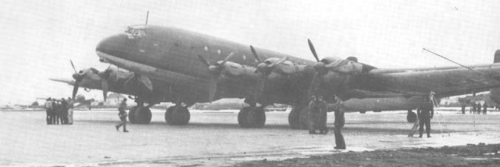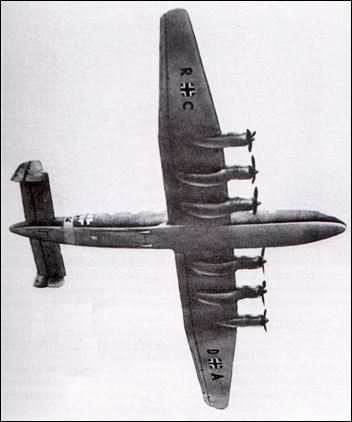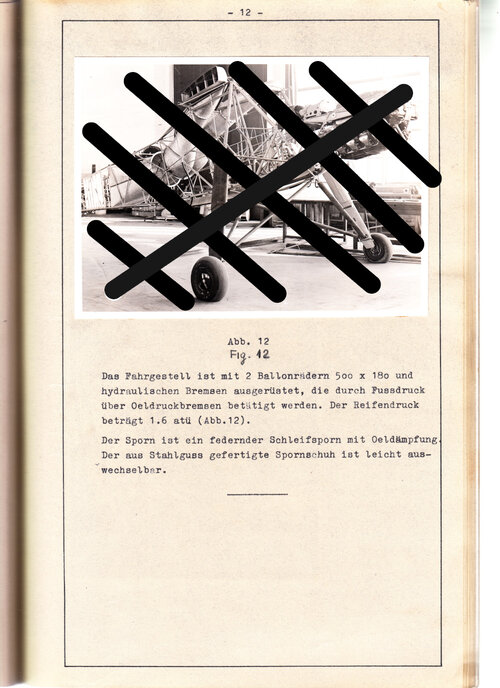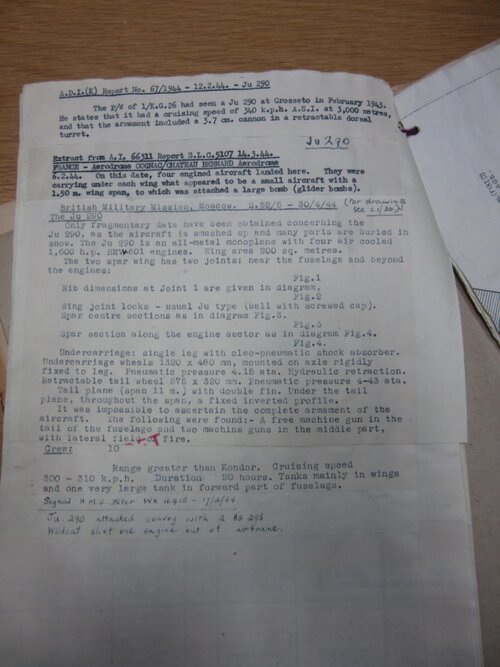- Joined
- 26 May 2006
- Messages
- 34,895
- Reaction score
- 15,759
Jemiba said:The source would be interesting .... as usual ! :
Here it is my dear Jemiba,
Last edited:
Jemiba said:The source would be interesting .... as usual ! :
The drawings look like they were copied from William Green's "Warplanes of the third reich".hesham said:Hi,
here is a profile drawings to some variants of the Junkers Ju-290.
hesham said:... it's Ju-90 with A-4b.
Jemiba said:hesham said:... it's Ju-90 with A-4b.
Not sure, what that means. Maybe the model of the Ju 90 with the nose of the Ju 290 A-4b ?
richard B said:It looks much like this one :
https://www.secretprojects.co.uk/forum/index.php/topic,23182.msg323105.html#msg323105


Very good information! Thanks for sharing!Hello everyone...this is my first post here. Some time ago i´ve made an articule about the 390 to post in a Facebook group, so i hope you dont find too boring:
Two prototypes of the Junkers 390 were created by attaching an extra pair of inner-wing segments onto the wings of Ju 90 and Ju 290 airframes, and adding new sections to lengthen the fuselages. Power came from 6x1,500 hp BMW radial engines and it had a range of 18,000 miles. The V1 GH+UK made its maiden flight (allegedly) on 20 October 1943 and performed well, resulting in an order for 26 aircraft. According to former Junkers test pilot Hans-Joachim Pancherz' logbook, the Ju 390 V1 was brought to Prague immediately after it had been displayed at Insterburg to the Fuhrer, and while there took part in a number of test flights, which continued until March 1944, including tests of in-flight refueling. The project was cancelled in mid-1944. The Ju 390 V1 was returned to Dessau in November 1944, where it was destroyed in late April 1945 as the American Army approached. The second prototype V2 (RC+DA), was longer than the V1 because it was constructed from a Ju 290 airframe. It was fitted for maritime patrol. Interestingly the photo snapped of RC+DA was taken during an attack on a Malta Convoy, suggesting this aircraft was possibly operated by LTS.290 in North Africa. The photo clearly shows a white "Afrika" band. The photo was taken by merchant seaman Ron Whylie whilst his convoy KMF-5 was under attack in late 1942. The date alone disrupts claims that the first flight was made in 1943. A copy of his photo of RC+DA was long held by the Museum of Military History in Vienna and published by German test pilot Hans Werner Lerche in his autobiography. There are several wild tales involving Ju 390s in the Internet. A Ju 390, which may or may not have been the V2, is claimed by some to have made a test flight from Germany to Cape Town in early 1944. The sole source for the story is a article which appeared in the "Daily Telegraph" in 1969 titled "Lone Bomber Raid on New York Planned by Hitler", in which Hans Pancherz reportedly claimed to have made the flight in question, in company with an air to air refueling aircraft [Ju-290 reg CE+YZ] in January 1944. According to the book "German Aircraft of the Second World War" by J.R.Smith and Anthony L.Kay, the Ju 390 V2 went in January 1944 to FAGr 5 at Mont-de-Marsan for operational evaluation, from where it made a claimed flight to within 12 miles of New York. Other sources say that the recon flight to NY was on 27 August 1943, from Norway. What is a fact its that FaG 5 was disbanded in August 1944 when airbases in France were threatened by the Allies. FaG's Ju 290s and 390s were passed to KG 200, a special missions unit. Several interesting missions are attributed to the Ju 390, including liaison flights to Japan. While confirmation is lacking [not surprising for KG 200, a special ops unit)] Ju 290A-9s are known to have completed these missions. The V2 was standing by at Rechlin to evacuate Nazi VIPs to Spain in April of 1945. While a Ju 290A-5 actually made the flight to Spain, the V2 was not reported to have been located after the war. One account says the V2 was flown from Poland with German scientists and a secret centrifuge which ionized mercury(project Cronos/Laternenträge) to Bodo, Norway, where it was repainted in Swedish colors, and then flown with mid-air refueling to a ranch in Paysandu Province, Uruguay. The landing was witnessed by a Polish diplomat. The aircraft was then dismantled and sunk in the Uruguay River, where it is said to remain to this day.
View attachment 637446View attachment 637447
4 comentários
3 partilhas
Hello everyone...this is my first post here. Some time ago i´ve made an articule about the 390 to post in a Facebook group, so i hope you dont find too boring:
Yes, they had idea to equip the Bomber with small fightersa strange Info about Ju-290; a parasite for bombers ?
Interesting that they would not learn from the failures of the Soviet Zveno efforts.
Anyone ever seen this design before? It's a Junkers transport design that was wind tunnel tested by the AVA in April 1943. Its fuselage is 2846mm long and it has a wingspan of 3527mm (Ju 90 = 2600mm and 3500mm, Ju 290 = 2864mm and 4200mm) so it's sort of a Ju 290 with a Ju 90 wingspan. It also has a tall central fin between its two rudder plates.
Known or unknown?
Credit to Wikipedia:
"Germany's Last Ju 290s
Despite the end of reconnaissance operations from France and the Amerika bomber program, starting in September 1944 three more Ju 290s were constructed for "special purposes" by Junkers. Their works numbers are unknown. What those "special purposes" were, or if they ever came to be, is unknown."
While I understand that this is from Wikipedia, I still have not come across an explanation for what this is referring to. The source is "Griehl 2006, p. 203". A thread I saw on ww2aircraft.net suspected that they might have been ones intended for Japan, but I am skeptical about that.* I have my doubts mainly because I have only heard about Japan being fully committed to the Ju-390, and an axishistory.com user stated in a thread that the Ju-290 was turned down because of concerns over getting them to Japan over Russia.** Does anyone here have an answer to what these final Ju-290's were for?
*https://ww2aircraft.net/forum/threads/fate-of-3-ju-290s-produced-late-in-the-war.45266/
**https://forum.axishistory.com/viewtopic.php?t=102549
Hi Dan,
Anyone ever seen this design before? It's a Junkers transport design that was wind tunnel tested by the AVA in April 1943. Its fuselage is 2846mm long and it has a wingspan of 3527mm (Ju 90 = 2600mm and 3500mm, Ju 290 = 2864mm and 4200mm) so it's sort of a Ju 290 with a Ju 90 wingspan. It also has a tall central fin between its two rudder plates.
Known or unknown?
It might be worth noting that the German text indicates that this is a design using bondary layer control, I presume by suction. The curves at the bottom show the estimated blower power required to achieve certain clmax values for different configurations.
Wing area is stated as 184 m^2 in the diagram, by the way.
I believe there were trials with a Fieseler Storch using such a system at a much smaller scale, but I have no idea if there was any Junkers connection. The "Saugstorch" ('suction stork'was covered by an article in one of the early Luftfahrt International issues, if I remember correctly.
Regards,
Henning (HoHun)


Okay, thank you for the informative reply.Credit to Wikipedia:
"Germany's Last Ju 290s
Despite the end of reconnaissance operations from France and the Amerika bomber program, starting in September 1944 three more Ju 290s were constructed for "special purposes" by Junkers. Their works numbers are unknown. What those "special purposes" were, or if they ever came to be, is unknown."
While I understand that this is from Wikipedia, I still have not come across an explanation for what this is referring to. The source is "Griehl 2006, p. 203". A thread I saw on ww2aircraft.net suspected that they might have been ones intended for Japan, but I am skeptical about that.* I have my doubts mainly because I have only heard about Japan being fully committed to the Ju-390, and an axishistory.com user stated in a thread that the Ju-290 was turned down because of concerns over getting them to Japan over Russia.** Does anyone here have an answer to what these final Ju-290's were for?
*https://ww2aircraft.net/forum/threads/fate-of-3-ju-290s-produced-late-in-the-war.45266/
**https://forum.axishistory.com/viewtopic.php?t=102549
The order to cancel Ju 290 production (along with a handful of other types) seems to have been given by the Jaegerstab prior to the Kommando der Erprobungsstellen der Luftwaffe meeting on May 27, 1944, since it's discussed at that meeting.
Then at a Jaegerstab meeting on July 1, 1944, presided over by Goering, the Ju 290 is included in a much longer list of types that have been cancelled, including: Ju 288, Ju 390, Ta 154, Ta 254, Me 410, Hs 129, Ju 87, He 111 (production to run until Jan 45), Ju 352, Bf 108, Ar 96, Ar 196, BV 222, BV 238, Do 24, Do 26 and Go 242.
A memo from the Oberkommando der Luftwaffe Generalquartiermeister (Nr. 9241/44) of September 10, 1944, includes the Ju 290 in a list of types allowed to remain in service until their spares run out; other types on the list are the Ar 66, Go 145, Ju 87 D/G, Hs 129, Fw 58 B, Ju 88 bomber variants, Fw 189, Do 217, Me 410, Fw 200, Ar 196, BV 138, Do 24, Ju 52, Bf 108, DFS 230, Bu 131, Kl 35, W 34 hi, older Bf 110s and He 111s.
It is further noted that the Ju 290, Fw 200, Ju 352, Me 410, He 177 A-3/A-5, Hs 129, Fw 189, Do 217, BV 138, Ar 196, He 111 P, D and H-1 to 5, and Bf 110 older versions are to be withdrawn from service in spring 1945 regardless of spares, while the Ar 66, Go 145, Ju 87 D/G, Fw 58 B, Ju 88 (all variants), Ju 188, He 111 H-6 to 20, Ju 52, Bf 108, Bu 131, KL 35, Do 24 and W 34 hi can remain in service until the end of 1945 (!).
There is no mention anywhere in the high-level meetings of three additional Ju 290s being built for 'special purposes' - the production line was supposed to have been halted with immediate effect at the end of May 1944.
Griehl had a habit of putting tantalysing snippets like this into his books but then failing to back them up with any verifiable source which would allow others to check his work. The book referenced by Wikipedia, Luftwaffe Over America, has a little note at the back which says "A listing of the approximately 5,500 individual original documents consulted has not been included for reasons of space". Unfortunate.
It's not impossible that despite the desperate situation in September 1944, when all available resources were urgently needed for fighters, and when Junkers was gearing up to mass produce the He 162 and Me 163 (which it had taken off Messerschmitt), for reasons unknown the Ju 290 production line was reopened and three more were made. But it seems somewhat unlikely. Unless any primary source evidence emerges to verify Griehl's claim, I would regard it with a degree of skepticism rather than treating it as absolute fact.
Is it possible that the 'additional airframes' were so far along construction that a decision was made to complete them? More work to break them up in other words.
Actaully, the idea of parasite fighters was seriously researched even after WW2 - FICON project, Project Tom-Tom, XF-85 Goblin....Interesting that they would not learn from the failures of the Soviet Zveno [edit: -1 to -7 parasites-definding-the-mothership] efforts.
Anyone ever seen this design before? It's a Junkers transport design that was wind tunnel tested by the AVA in April 1943. Its fuselage is 2846mm long and it has a wingspan of 3527mm (Ju 90 = 2600mm and 3500mm, Ju 290 = 2864mm and 4200mm) so it's sort of a Ju 290 with a Ju 90 wingspan. It also has a tall central fin between its two rudder plates.
Known or unknown?
That is probably the ugliest glazed nose in history. Also, I was unaware until now that the ventral nose gondola was offset!Just posted by the San Diego Air & Space Museum (SDASM) on their Flickr Photostream from the Jack Canary collection, a couple of color photos of the captured Junkers Ju-290 (Ju-290A-5, to be exact) "Alles Kaputt." Plenty of other color gems in this collection. Check them out here (link)
View: http://www.flickr.com/photos/sdasmarchives/8663875906/in/photostream

